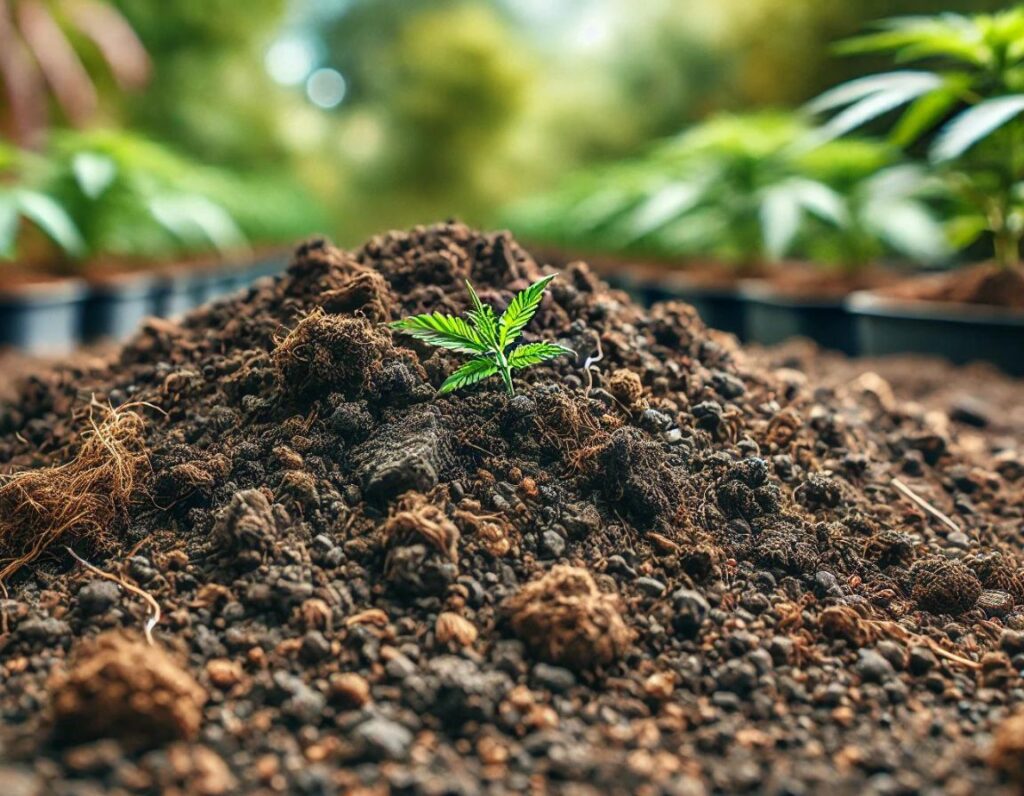
When growing Green Crack seeds, one of the most critical factors for success is choosing the right soil. Cannabis plants, especially Green Crack, thrive in soil that offers a balance of nutrients, drainage, and aeration. For outdoor growers in the USA, where regional climates vary significantly, selecting soil that suits your local conditions is essential. A good starting point is using organic soil that is rich in organic matter like compost or worm castings. This not only provides a wealth of nutrients but also enhances the soil structure, making it easier for the roots to access water and oxygen.
The ideal soil for growing Green Crack seeds has specific characteristics that cater to the plant’s needs. Here are some critical qualities to look for:
Several soil options are available for growing Green Crack, each with its own pros and cons. Choosing the right one depends on your growing style, whether it’s organic or conventional, and your local conditions.
Even if you start with high-quality soil, you may need to amend it to create the perfect environment for your Green Crack plants. Amending soil involves adding organic or mineral materials to improve its structure, nutrient content, and water retention.
Watering your Green Crack plants correctly is just as important as choosing the right soil. Too much or too little water can stress your plants and affect their growth.
Depending on your soil type and local climate, the watering frequency may vary. Well-drained soils, such as loamy soils, may require more frequent watering in hot weather, while heavier soils can retain moisture for longer periods. Always let the top inch of soil dry out before watering again.
Tap water can sometimes contain high levels of chlorine or other chemicals that affect plant growth. Using filtered or rainwater is a better option, and it helps prevent mineral buildup in the soil.
Like the soil’s pH, the water you use should also be within the 6.0 to 7.0 range. Using a pH meter ensures that you aren’t inadvertently altering the pH balance in the soil and affecting nutrient uptake.
Even with the best soil, problems can arise. Here are some common soil-related issues and how to address them:
This is one of the most common mistakes, especially for beginners. Overwatering leads to poor oxygen availability in the soil, causing root rot. To prevent this, make sure your soil has good drainage, and don’t water until the top inch of soil is dry.
If your plants show signs of yellowing leaves or stunted growth, they may be lacking essential nutrients. Adding organic fertilizers or amending the soil with compost or worm castings can help address this.
If your plants are suffering from nutrient lockout, check the soil’s pH. Soil that’s too acidic or too alkaline prevents nutrient absorption. Using a pH meter and adjusting with lime (to raise pH) or sulfur (to lower pH) will help restore balance.
Loamy soil is often considered the best option, as it provides excellent drainage, nutrient retention, and aeration. It can be easily amended with organic materials for better results.
Regular garden soil may not provide the necessary nutrients and drainage that Green Crack needs. It’s better to use specialized cannabis soil or amend garden soil with organic matter to improve its quality.
Water your Green Crack plants when the top inch of soil feels dry. Overwatering can lead to root rot, so it’s essential to ensure the soil drains well.
The ideal pH for growing Green Crack in soil is between 6.0 and 7.0. This range allows for optimal nutrient absorption.
Yes, compost is an excellent amendment for improving soil structure, nutrient content, and moisture retention. It’s a great organic option for feeding your plants naturally.
We ship and deliver world wide via USPS and various couriers.
We offer a wide range of secure and anonymous online payment options.
We care about you, our customer. Please contact us with any questions or concerns.
Find out more about the benefits of being a loyal and regular customer.
WE ARE EVERY GROWERS ONE STOP SHOP TO ACQUIRE PREMIUM CANNABIS SEEDS FOR SALE IN THE USA, CANADA AND AUSTRALIA

Farmers Lab Seeds 2024, | All Right Reserved
Seeds are sold as novelty items, souvenirs, and collectibles. They contain 0% THC. We encourage our customers to check the legislation in their Country, State, Province, and Municipality prior to purchasing items from our store. We do not provide growing information.
All seeds are sold as hemp, and lab tested under 0.3% THC. This product is not for use by or sale to persons under the age of 21. This product should be used only as directed on the label. It should not be used if you are pregnant or nursing. Consult with a physician before use if you have a serious medical condition or use prescription medications. A Doctor’s advice should be sought before using this and any supplemental dietary product. All trademarks and copyrights are property of their respective owners and are not affiliated with nor do they endorse this product.
These statements have not been evaluated by the FDA. This product is not intended to diagnose, treat, cure or prevent any disease. Individual weight loss results will vary. By using this site, you agree to follow the Privacy Policy and all Terms & Conditions printed on this site. Void Where Prohibited by Law.